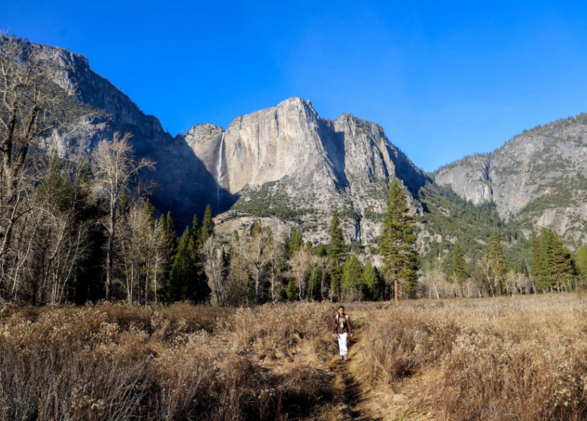Lessons From the Field: Happy Isles Fen
As Yosemite National Park explains, a fen is a peat-forming wetland. The Happy Isles Fen, a rare example of a fen ecosystem, are a pair of islands in the Merced River at the east end of Yosemite Valley. In this week's Lessons From the Field, we'll take a walk through this unique wetland.
A Unique Example of a California Fen Ecosystem #
While California experiences many different weather patterns and microclimates (some of which are very wet), the Sierra Nevada area is typically drier and has less moisture in the soil and air.
In the winter, we expect heavy, wet snow to fall on the upper elevations of the Sierra Nevada mountain range. All of that snow melts slowly throughout the spring and summer months, generally drying out sometime in the late summer, depending on elevation. The Fen is unique in that it stays wet for enough time each year to form peat. When you are in the Fen, you can see fast-moving but gentle water flowing under the boardwalks constructed to keep visitor’s feet off of delicate plants and soils. The amount of flowing water spread across a wide flat area—and the fact that the water is flowing over mostly soil deposits and not rock—makes this area different than the streams you see elsewhere in Yosemite.
A Seasonal Wetland #
While Yosemite and the Sierra Nevada can receive precipitation in the form of rain, hail or even snow throughout the year, the majority of our water supply comes from slow-melting winter snowpack at higher elevations. This snowpack both melts and flows in the form of streams, and also replenishes our groundwater levels.
Currently, the Fen is experiencing seasonal spring flooding and rushing water from snow melt streams cascading from up high above the Valley floor. In a month or two that flow will slow down as snow levels decrease. The Fen’s soil stays moist year-round though, fed by the stored ground water (as opposed to precipitation).
Preserving The Fen #
Often, wetlands outside of national parks are filled in or paved over because they seem like buggy, wasted space. Keeping wetlands intact however, helps filter water, prevent flooding and erosion, and provide incredible habitats for plants and animals that would be unable to thrive in other parts of the Sierra Nevada.
One of the most interesting opportunities in the Fen is looking for aquatic macroinvertebrates: organisms with no spine that you can see without a microscope. Not only can they tell you a lot about water quality, but they are also really fascinating to find and watch. Some move with a body part that looks like a tail, while some wiggle their whole body, and others look like they are swimming. Some live under rocks, some live on decaying leaves, and others are free-floating.
Read about the 2002 restoration of the Happy Isles Fen through the National Park Service.
Stay tuned for more NatureBridge educator insights on wildlife, flora and fauna in this 'Lessons from the Field' series.

